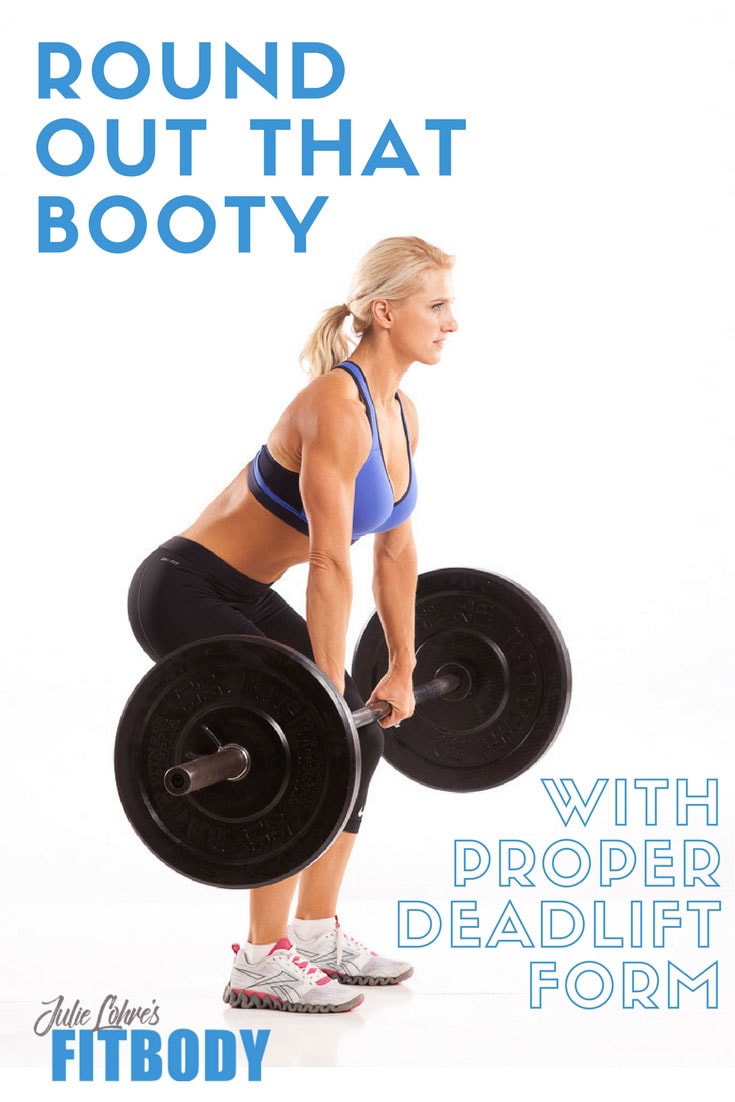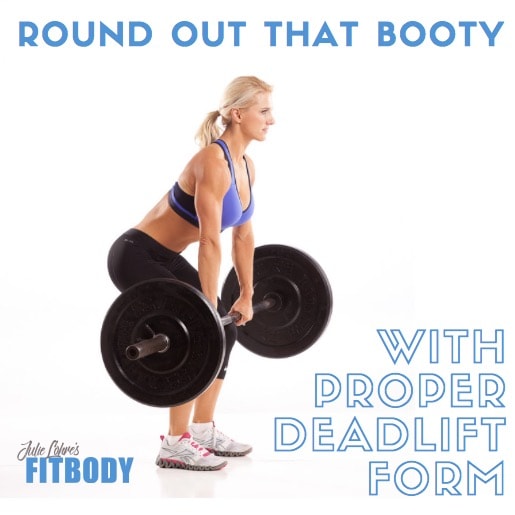How to do a Romanian Deadlift with Proper Form
Ready to find out the proper deadlift form once and for all? There is a lot of confusion when it comes to one of the ‘big’ exercises that traditionally has been a powerlifting or Crossfit move.
How do you do a barbell deadlift?
What is a Romanian Deadlift?
What muscles are worked?
How do I know if I have proper deadlift form?
These are all great questions and I am excited to get to the bottom of each here!

Video Demo: Proper Deadlift Form
What muscles do deadlifts work?
One of my favorite things about the traditional or Romanian deadlift is that it works most all of the bottom half of the body. Let me break it down:
- Gluteus Maximus: The main extensor muscle of the hip. It is the largest and most superficial of the three gluteal muscles and makes up a large portion of the shape and appearance of each side of the hips. Its thick fleshy mass, in a quadrilateral shape, forms the prominence of the buttocks
- Quadriceps: The great extensor muscle of the knee, forming a large fleshy mass which covers the front and sides of the femur. The name derives from Latin four-headed muscle of the femur.
- Adductor Magnus: (Inner Thigh) – The is a large triangular muscle, situated on the medial side of the thigh.
- Soleus: The powerful muscle in the back part of the lower leg (the calf). It runs from just below the knee to the heel, and is involved in standing and walking.
- Hamstrings: One of the three posterior thigh muscles in between the hip and the knee.
- Gastrocnemius: A powerful superficial two-headed muscle that is in the back part of the lower leg of humans. It runs from its two heads just above the knee to the heel, a two joint muscle
- Erector Spinae: A set of muscles running along the spine involved in posture and maintaining erect form.
- Upper & Lower Trapezius – The large paired surface muscles that extends longitudinally from the occipital bone to the lower thoracic vertebrae of the spine and laterally to the spine of the scapula. It moves the scapula and supports the arm.
- Levator Scapulae: A skeletal muscle situated at the back and side of the neck. As the Latin name suggests, its main function is to lift the scapula.
- Rhomboids: These are the rhombus-shaped muscles associated with the scapula and are chiefly responsible for its retraction. They are innervated by the dorsal scapular nerve.
- Rectus Abdominis: That central paired muscle running vertically on each side of the anterior wall of the abdomen.
- Abdominal Obliques: A muscle in the abdominal wall that lies below the external oblique and just above the transverse abdominal muscles.
As you can see a great deal of the body is involved in the Romanian deadlift which is one of the reasons this is such a great exercise. However that also means that it can take a lot of work to complete it with proper deadlift form and to stay safe while doing it. This is one of the most challenging lifts to get right. With incorrect deadlift form, you can really strain your lower back! Whether or not deadlifts are in your program right now, I want to be sure that when you are attempting this lift, you do so with the perfect deadlift form so you get the most out of the lift and stay safe!
How to do a Deadlift & How to Know if you have Proper Deadlift Form

** Start Light. Until you have mastered the form, keep your Romanian deadlift weight light. An unloaded barbell or two lower weight dumbbells are plenty of resistance to allow you to practice form.
Proper Deadlift Form – Step by step:
- Approach to the bar. Start by standing in front of the bar with your feet slightly under it. Feet should be hips width apart and toes slightly turned out.
- Grip the bar. As you squat down keep your arms straight and shoulder width apart, just outside of your legs. Chest remains lifted.
- Bend your Knees. Place the bar right at your shins but keep your hips slightly elevated.
- Lift from your Legs. Take a big breath and begin to stand up using your legs for perfect deadlift form. Keep the bar close to your shins allowing it to follow your legs upward. Keep your shoulders and traps relaxed and down. Straighten your back. Don’t move the bar forward or back. Don’t drop your hips. Don’t squeeze your shoulder blades.
- Maintain Core & Gaze. Keep your core tight as you lift up and continue to look forward through the movement, not down.
- Weight in the Heels. Keep your weight pressing through your heels and hamstrings engaged as you lift up.
- The Return. Reverse through these steps to bring the bar back to the ground in a controlled manner. You should allow the weights to touch the ground with each rep ensuring that you have gone through the full movement.
Deadlift Variations
Once you have proper deadlift form and can consistently do your barbell deadlift or Romanian deadlift safely, you can work to increase the weight that you use slowly over time. Take your time and build up to the next level as possible. You can do the deadlift in many different ways to target different portions of the body and different muscle groups. Here are a few of my favorites:

